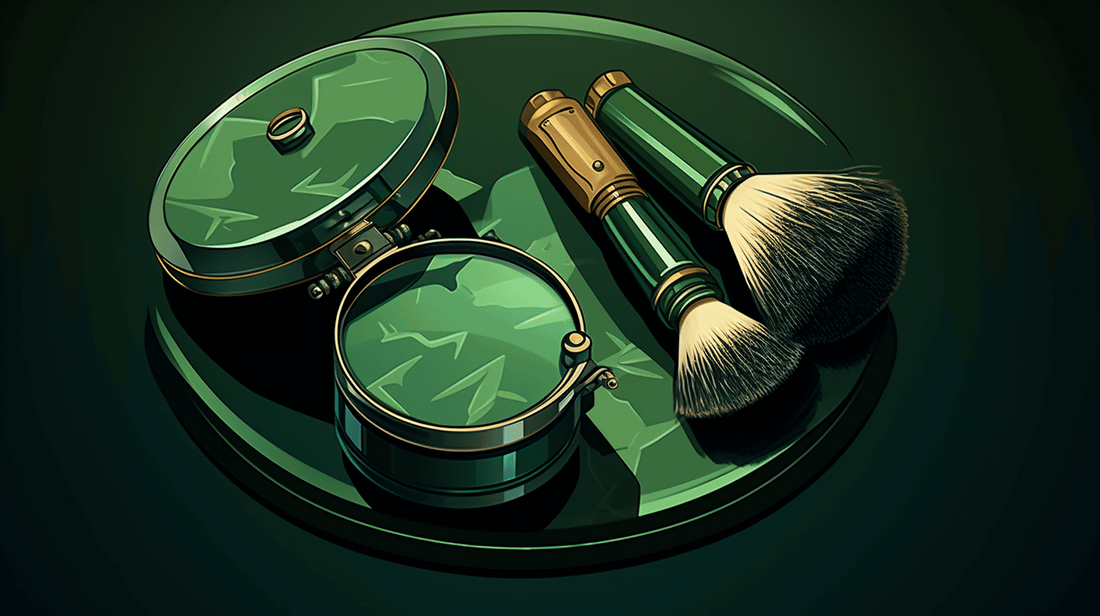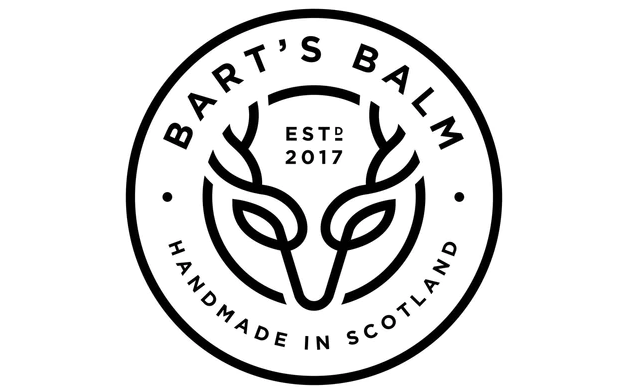Gone are the days when shaving was considered a banal part of our morning ritual, something we'd do mindlessly before heading off to start the day. In the present age, an interesting transformation is happening - shaving is undergoing a renaissance of sorts. It's no longer just about removing unwanted hair; it's becoming an indulgent self-care routine that's paving the way for the booming market of handmade and luxurious shaving products.
From artisanal shaving soaps to high-quality aftershaves, consumers are willing to invest in premium products that turn the ordinary act of shaving into an extraordinary experience. This penchant for quality over cost-effectiveness has fueled a global shift in shaving trends, with a heavy lean towards the handmade and luxurious. Relishing the shaving experience isn't just for the dapper man – more and more women are getting in on the action too, incorporating high-end razor products into their grooming routines.
We'll delve into the intricacies of this booming industry, taking a comprehensive look at the global and regional market trends while also exploring the upswing in homemade and luxury products. We will also examine shifting consumer preferences, distribution channels, and the latest cutting-edge innovations in shaving technology and sustainability practices. So, let's embark on this fascinating journey into the world of luxury shaving, watching it transform from a mundane chore into an indulgent art form.
Growth of Global Shaving Market
The global shaving market is a fast-paced sector boasting significant growth potential. It's a marketplace characterized by a proliferation of innovative products merging fashion with necessity. Steadily revolutionizing grooming habits worldwide, the shaving industry is no longer limited to just manual and electric shavers. It now encompasses a vast array of products, including creams, foams, gels, and other shave care products. What's interesting to note is the forecasted growth of this industry, which is slated to soar in the coming years. Whether it's for maintaining personal hygiene, sculpting a stylish look, or enhancing one's appearance, the global demand for quality shaving products is on the rise.
By 2033, the global shaving market is projected to reach an impressive $6.6 billion, marking a Compound Annual Growth Rate (CAGR) of 3.7% from 2024. Look a little closer, and you'll notice that the growth rate is anticipated to jump by 3.18% from 2024 to 2028. As a result, the market volume is expected to skyrocket to $41.33 billion. This robust growth indicates an expanding consumer base, increasing demand, and a progressive shift in grooming trends across the globe.
Dig a little deeper, and a fascinating trend comes to light. The shaving preparations sector, encompassing products like creams, gels, and foams, is estimated to reach $1.67 billion by 2028, growing at a rate of 11.3%. This indicates a rising consumer inclination towards grooming regimens and demand for scientifically advanced formulations that not only provide a comfortable shave but also nourish the skin.
Adding to the market's dynamism, there's also a growing demand for natural shaving creams and other organic shave care products. Increasing awareness about the benefits of organic ingredients coupled with the rising need to prevent skin damage from synthetic compounds has significantly propelled this trend. By 2034, this sub-sector's market size is projected to surge to $37.06 billion, underlining consumers' shift towards green solutions for their grooming needs.
The global shaving market's growth is truly remarkable, reflecting the changing patterns in consumer behavior, advances in product formulation, and the increasingly important role of personal grooming in everyday life. This growth trajectory confirms that the shaving industry, with its myriad products, is set to redefine personal care standards globally. It convincingly reaffirms that not only does the industry hold immense potential, but it's also an exciting space to watch in the coming years.
Regional Shaving Market Dynamics
Understanding the dynamics of the regional shaving market can help identify emerging trends and forecast economic outcomes. This leans heavily on analyzing the factors that influence the supply, demand, and pricing within the shaving market across regions. For this bit, we will focus on three distinct regions: United States, North America, and India.United States
Engaging with the shaving market within the United States reveals some noteworthy patterns. Over the next few years, the US shaving market is projected to experience a modest decline. It is estimated that by the year 2028, the market volume will dwindle to around $3.93 billion, marking a -0.44% decrease from 2024. This trend indicates a gradual shift in consumer behavior, possibly as a favor towards alternative grooming methods or in response to the increasing popularity of unshaven facial aesthetics.
North America
Contrasting the situation in the United States is the overall dynamics of the shaving market within the broader North American region. Here, the focus is particularly on men's grooming products. The market for these products in North America is poised for impressive growth. Between 2020 and 2025, the men's grooming market is expected to grow at a 7.02% Compound Annual Growth Rate (CAGR). This shows that despite the shift in trends within the US, the demand for men's grooming products across North America remains strong.
India
India, with its massive population and progressively evolving consumer market, is another region with significant implications for the shaving market dynamics. The Indian shaving cream market demonstrates a positive growth trajectory, with a projected 6.1% CAGR from 2024 to 2030. This raises the anticipated market value to an impressive $2.66 billion. Such growth in the India shaving cream market can be attributed to the rising disposable income, expanding middle-class consumer base, and cultural shifts favoring personal grooming.
The regional shaving market dynamics portray a captivating interplay of various factors, influencing the global landscape of the shaving industry. Whether it's the declining trend in the US, the growing North American men's grooming market, or the thriving shaving cream market in India, each region presents its unique dynamic contributing to the overall global narrative.
Note, investing worthy time in regional market study can offer keen insights to a brand looking to expand or modify its product offering, ensuring alignment with shifting consumer preferences and market trends—providing a strategic advantage in the ever-competitive world of grooming.
The Rise of Handmade and Luxurious Shaving Products
Experience a shave like no other, marked with luxury and quality. Classic wet shaving is experiencing a resurgence. More consumers are embracing the art of traditional wet shaving, proving that the time-honored art is far from obsolete. The resurgence can be largely credited to the rise of luxury shaving products that not only promise a smooth shave, but ensure the routine becomes a first-class experience.
On the forefront of this are handmade, luxurious shaving products. Handcrafted items remain unbeatable in their quality and craftsmanship, and when it comes to shaving products, this truth holds stronger than ever. This industry experienced a renaissance, relishing a renewed consumer appreciation that values quality, luxury, and the tangible benefits of artisanal craftsmanship.
There are several reasons behind the burgeoning popularity of luxurious shaving items. Let's delve into understanding these trends:
- Going Natural: More and more consumers prefer products created from natural ingredients. Shaving product manufacturers are responding accordingly, crafting balms and aftershaves from ingredients like shea butter and coconut oil known for their skin nourishing properties.
- Pursuit of Excellence: Handmade shaving products are often meticulously crafted, resulting in a final product of the highest quality. This unparalleled attention to detail has led to a noticeably better end-user shaving experience, further fueling the growth of these products.
- Resurgence of Classic Wet Shaving: As it appears, everything old is new again. The classic wet shaving method has emerged from the shadows, prompting a newfound public enthusiasm. This, in turn, sparked the rise of handcrafted shaving products designed to cater to this niche yet growing market.
As revealed in our piece on the Rise of Luxury Shaving Products, the shaving industry is not just surviving; it's thriving! The current love affair between consumers and luxury grooming products shows we're in the midst of a fascinating shift, one where 'experience' and 'handmade' seem to be the new buzzwords.
In this sea of change, luxury-arisen, handcrafted shaving products are setting the course. They've invigorated a sense of craftsmanship and elegance in the shaving routine, showing that the act of grooming is not just a chore but a symbol of style and personal refinement. This trend brings promise not just to our daily routines but also to the artisans who pour their passion and talent into creating these exquisite products.
Shaving Market by Gender Segments
Men's Grooming
In today's consumer market, men's grooming has taken a front seat, transcending the boundaries of traditional stereotypes. Making a significant dent in the beauty industry, the segment of men's grooming products is seeing an explosive rise. In terms of numerical figures, it's not just about chump change.
According to recent data, the global men's grooming products market size was valued at a hefty $74.8 billion just in 2021. But hold your breath, because things get even more interesting; this market is projected to reach a whopping $132.73 billion by the end of 2030. That's almost a 100% increase over less than a decade!
But what's propelling this industry growth? Well, multiple factors are at work here. The increasing influence of social media, the changing perceptions of masculinity, and a growing awareness of self-care have all played their roles in driving men towards self-grooming products. The future sure seems bright for this particular market segment.
Women's Razor
Switch gears now, because the story of the women's razor market is equally intriguing. It's not just about men's grooming; women are just as enthusiastic when it comes to maintaining their aesthetics. And a quintessential part of a woman's grooming kit? You guessed it - the razor.
Women's razor market is on a steady upswing, projected to reach $5.28 billion by the year 2028. Growing at a robust CAGR of 4.85%, this niche is set to carve a large chunk for itself in the beauty industry. Women around the globe are choosing razors for a convenient, quick, and cost-effective grooming solution, underpinning the consistent growth in this market.
To sum up, both men's grooming and women's razor markets are on a clear upward trajectory. With people paying unprecedented attention to their personal grooming and companies churning out innovative products to cater to these needs, it's safe to say that the shaving market by gender segments will continue to thrive.
Distribution channels of Shaving Products
When it comes to product distribution, a channel isn't just the physical route a product takes from producer to consumer. It’s a vital part of the marketing mix, an influential factor of product success, and a perfect carrot to lure consumers to your brand. In the shaving product market, several distribution channels, each with its distinct properties, help in overcoming the space between the manufacturers and consumers.
Primarily, shaving products find their way to consumers through a collection of traditional and modern channels. However, it's essential to note that supermarkets and hypermarkets dominate the distribution channel segment for shaving products. Why? It's partly due to the consumer's preference for a one-stop shopping experience.
Traditional channels include:
- Supermarkets and Hypermarkets: These massive retail centers are a preferred destination for consumers, especially for bulk purchases. They offer a wide range of shaving products, from various brands, making them a go-to place for many shoppers.
- Department Stores: Though not as dominant as supermarkets, department stores cannot be overlooked. They provide a convenient platform for a pick-and-go shopping experience, particularly advantageous for consumers wanting specific brand products.
Modern channels have gained significant momentum in the last decade due to the rapid rise in e-commerce and include:
- Ecommerce platforms: Online shopping offers a wide variety of products, competitive pricing, and unparalleled convenience, which has subsequently led to a surge in its popularity among consumers.
- Shaving Subscription Boxes: Subscription services offer consumers the opportunity to sample different shaving products, delivered directly to their doorstep on a specified schedule. These services are loved by consumers who prefer experimenting or like having everything planned ahead.
Notably, consumer behavior has a profound influence on the success or relevance of these channels. For instance, the current younger generation gravitates towards online shopping, making e-commerce a lucrative platform for shaving products. Meanwhile, the older generation may favor physical stores, thereby making supermarkets and hypermarkets an ideal distribution channel to reach this demographic.
The different shaving product distribution channels mentioned above show how this market has adapted and diversified to meet the varied needs of the consumers. It underpins the significance of understanding consumer behavior and leveraging it to decide the best channel to reach your target audience. The key takeaway here is, know your consumer, find their preference, and you will find your ideal distribution channel.
Innovation and Trends in Shaving Products Market
In the past decade, the shaving products market has transformed in unprecedented ways. Technological advancements, environmental consciousness, and consumer preference for unique items have all contributed to this dramatic metamorphosis. This article seeks to illuminate these key drivers of change in the sector.
Use of Technology
One of the most significant factors contributing to the revolution in grooming is technology. The rise of artificial intelligence (AI) and 3D printing technologies marks a shift in the traditional shaving products industry landscape. With AI, manufacturers have an enhanced understanding of consumer needs and can personalize their offerings accordingly. On the other hand, 3D printing enables manufacturers to create tailored products that match the unique facial contour of each consumer. This new level of personalization has resulted in an uptick in market interest and consumer satisfaction.
Eco-friendly Trends
Another emerging trend that's rapidly gaining ground in the shaving products niche is sustainability. The demand for eco-friendly shaving products is on the rise, with consumers wanting more from their grooming essentials than just efficacy. They desire products that are gentle on the skin and the environment. This shift towards sustainability is not just a consumer-driven trend but also a testament to the innovation seen in this sector. As revealed by the report published on the Eco-friendly Shaving Products Trend, brands are adopting creative strategies to align to this change. They incorporate biodegradable packaging and natural ingredients to ensure their products are environmentally sound.
Demand for Unique Products
In recent years, there's been a distinctive shift towards uniqueness and individuality in consumer preferences. Traditional mass-produced shaving products are increasingly replaced by handmade, bespoke alternatives that offer a sense of luxury. High-quality shaving brushes, uniquely crafted razors, artisanal shaving soaps, and creams are high in demand. Embracing the handmade trend enhances customer loyalty and allows organizations to differentiate their products in a crowded marketplace.
To summarize, these trends reflect the dynamic nature of the market - predicting them, understanding their impact, and adapting to them is key for brands wishing to stay competitive in today's shaving products industry. As consumers, staying informed helps in making wise selections tailored to individual needs and values.
Conclusion
In the landscape of today’s fast-paced economy, the shaving market has undoubtedly come a long way. The rise of the handmade shaving product segment is a testimony to the evolving needs and preferences of consumers across the globe. They are increasingly gravitating towards high-quality, value-for-money, and most importantly, products that exhibit a keen sense of consideration for exquisite craftsmanship and environmental sustainability.
This adaptation is very much evident in the success of companies like Bart's Balm. With a jewelled history spanning over 25 years, the brand marvels in the beauty of handmade aftershave balms, pre-shave balms, and Eau De Parfums, showcasing a wide array of scents. Dedicated to superior performance, exceptional value, and delightful fragrances, all of the products are handmade in Scotland and have successfully won hearts worldwide.
The burgeoning trends spell promising times for brands fostering innovation and individuality in their offerings. By prioritizing consumer experience, sustainability, and technological integration, brands can unlock new pathways to success in this redefined shaving market.
As the consumer trends will continue to evolve, the shaving market, with its ingenious array of products and services, promises an exciting future, brimming with endless possibilities and opportunities!
Frequently Asked Questions
-
What are handmade shaving products?
Handmade shaving products are grooming products that are crafted by hand using traditional methods. These can include handmade shaving soaps, shaving creams, aftershaves, and shaving brushes.
-
Why are handmade shaving products growing in popularity?
Handmade shaving products are growing in popularity due to their high-quality ingredients, unique scents, and the overall luxury shaving experience they provide. They often contain natural ingredients that are gentle on the skin and offer superior performance compared to mass-produced products.
-
Are handmade shaving products suitable for all skin types?
Yes, handmade shaving products are suitable for all skin types. They often contain nourishing and moisturizing ingredients that can benefit sensitive or dry skin. Additionally, many artisans offer a variety of products specifically formulated for different skin types.
-
How can I find reliable handmade shaving product artisans?
To find reliable handmade shaving product artisans, you can read product reviews, search for recommendations in shaving forums or communities, and explore reputable online marketplaces that specialize in artisanal products. It's also helpful to reach out to the artisans directly and ask any questions you may have.
-
Are handmade shaving products more expensive than mass-produced ones?
Handmade shaving products can be slightly more expensive than mass-produced ones due to the use of high-quality ingredients and the labor-intensive process of creating them. However, many users find the superior quality and enhanced shaving experience well worth the investment.






